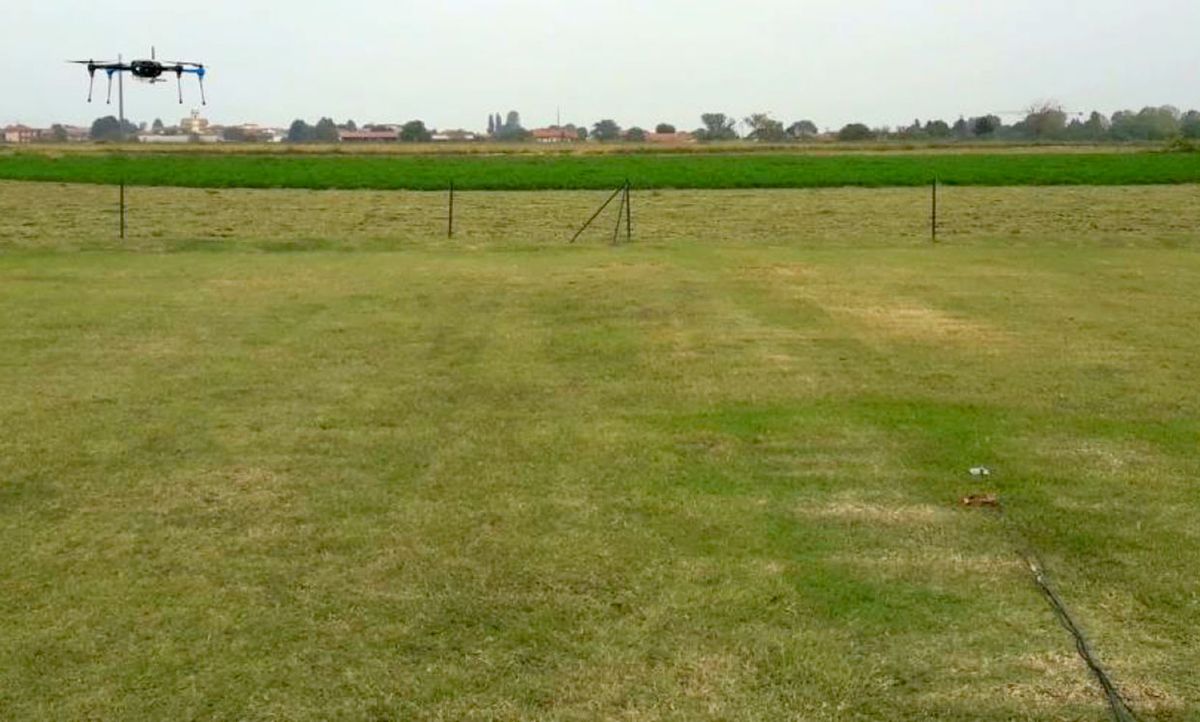Remote sensors play a valuable role in collecting data—but recharging these devices while they are scattered over vast and isolated areas can be tedious. A new system is designed to make the charging process easier by using unmanned aerial vehicles (UAVs) to deliver power using radio waves during a flyby. A specialized antenna on the sensor harvests the signals and converts them into electricity. The design is described in a study published 23 March in IEEE Sensors Letters.
Joseph Costantine and his colleagues at the American University of Beirut, in partnership with researchers at the Institute of Electronics, Computer, and Telecommunications Engineering in Italy, were exploring ways to remotely charge sensors using radio frequency waves (the same form of energy used to transmit Wi-Fi). However, a major challenge was that the source of the radio waves must be fairly close to the sensor in order to sufficiently charge it.
This prompted the researchers to consider the use of UAVs, which could soar over each sensor. “In addition, a UAV can follow an optimized trajectory that maximizes energy transfer to the sensors in question,” Costantine explains. He says his team developed this system to control and recharge sensors used in agriculture, but that it could be extended to any situation where sensors are deployed in hard-to-reach areas.
In the proposed approach, a UAV transmits radio frequencies to each sensor, which has an antenna for detecting the signals. The signals are then conveyed to a rectifier, which converts the signals into electricity. This power can be used to charge the sensor and/or activate it.
What’s more, the UAV can target specific sensors. “The modulated signal transmitted by the UAV [encodes] an address that can selectively trigger a particular sensor—out of many—from sleep mode into active mode. The system relies on purely passive components to achieve charging and on ultra-low power to trigger the wake-up protocol of a sensor,” says Costantine.
In tests, the UAV could activate the sensor from a distance of 27.5 meters at a receiving power of -40 dBm. Charging required closer distances, at 1.2 meters and -18.2 dBm.
Now, the team is working to develop a load-independent rectenna (antenna and rectifier) that maintains high efficiency across a wide range of loads and frequencies. “Such a system could be connected (or plugged in) to any sensor to support charging or wake-up,” Costantine says. “In addition, we are also working on further optimizing radio frequency energy harvesting from Wi-Fi signals by overcoming their intermittent nature, and increasing the number of sensors that can be specifically targeted in a given region."
Michelle Hampson is a freelance writer based in Halifax. She frequently contributes to Spectrum's Journal Watch coverage, which highlights newsworthy studies published in IEEE journals.



